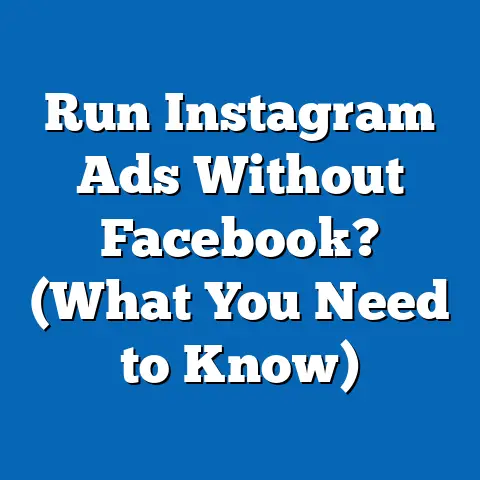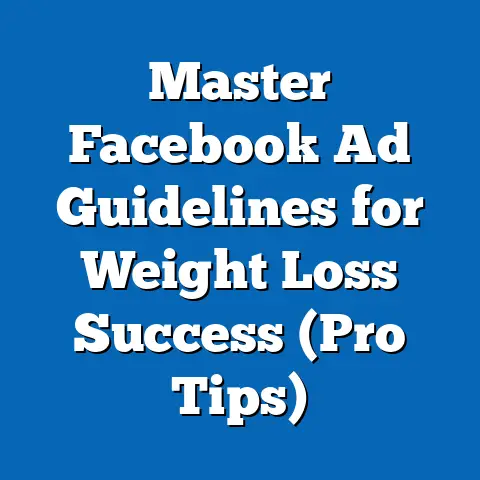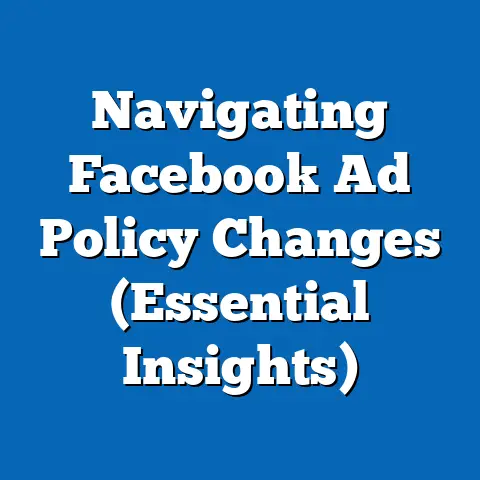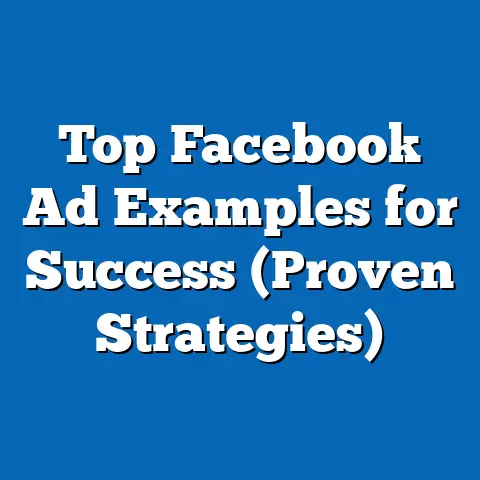Launch Facebook Ad Business (Proven Strategies Inside)
The digital advertising landscape has evolved significantly over the past decade, with platforms like Facebook (now part of Meta) becoming central to businesses seeking targeted, cost-effective marketing solutions. For entrepreneurs and small business owners, launching a Facebook ad business offers a low-maintenance entry point into the digital marketing industry, requiring minimal overhead while leveraging the platform’s vast user base of 3.05 billion monthly active users as of Q3 2023 (Meta, 2023). This fact sheet provides a comprehensive, data-driven analysis of launching a Facebook ad business, including current statistics, demographic breakdowns, trend analysis, and proven strategies for success.
This report is structured to guide potential business owners through the key considerations, from market opportunities to operational strategies, with a focus on factual reporting and objective insights. It draws on the latest industry data, surveys, and platform analytics to present a clear picture of the current landscape and future potential. Whether you are a freelancer, agency owner, or entrepreneur, this fact sheet aims to equip you with the necessary information to make informed decisions.
Section 1: Market Overview and Low-Maintenance Opportunities
The global digital advertising market reached $626.9 billion in 2023, with social media advertising accounting for 18.4% of that share, or approximately $115.3 billion (Statista, 2023). Facebook remains a dominant player in this space, commanding 24.2% of the global social media ad market, driven by its robust targeting capabilities and extensive user data. For individuals or small teams, launching a Facebook ad business represents a low-maintenance option compared to traditional marketing agencies, as it often requires only a laptop, internet connection, and expertise in ad creation and analytics.
Year-over-year growth in social media ad spending has been consistent, with a reported increase of 9.3% from 2022 to 2023 (eMarketer, 2023). This trend reflects growing business reliance on platforms like Facebook to reach niche audiences through hyper-targeted campaigns. Unlike other business models that demand physical inventory or large upfront investments, a Facebook ad business can be operated remotely with scalable costs, making it accessible to a wide range of entrepreneurs.
Demographic trends also favor this business model. According to Pew Research Center surveys conducted in 2023, 68% of U.S. adults use Facebook, with usage particularly high among those aged 30-49 (76%) and women (70%) compared to men (65%). This broad user base ensures that businesses across industries can find relevant audiences, creating demand for skilled ad managers who can optimize campaigns for specific demographics.
Section 2: Current Statistics on Facebook Advertising
As of 2023, Facebook’s advertising reach remains unparalleled, with the platform delivering ads to 2.11 billion users daily (Meta, 2023). The average cost-per-click (CPC) for Facebook ads across all industries is $1.72, though this varies significantly by sector, with finance and insurance ads averaging $3.77 CPC and retail ads at $0.70 CPC (WordStream, 2023). These figures highlight the platform’s affordability for small businesses, a key selling point for ad management services.
Revenue from Facebook advertising grew by 23% year-over-year in Q3 2023, reaching $33.6 billion, underscoring the platform’s profitability for Meta and its value to advertisers (Meta, 2023). Small and medium-sized businesses (SMBs) make up a significant portion of this revenue, with over 10 million active advertisers on the platform, 70% of whom are SMBs (Facebook for Business, 2023). This reliance on Facebook ads by smaller entities creates a ripe market for specialized ad management services.
Engagement metrics further illustrate the platform’s effectiveness. The average click-through rate (CTR) for Facebook ads is 0.90%, though this can reach as high as 1.33% for well-optimized campaigns in competitive industries like e-commerce (WordStream, 2023). These statistics emphasize the importance of expertise in ad creation and targeting, a niche that new ad businesses can fill.
Section 3: Demographic Breakdown of Facebook Users and Advertisers
Understanding the demographics of both Facebook users and advertisers is critical for launching a successful ad business. Among U.S. users, age distribution shows that 25-34-year-olds are the largest group (29.9% of users), followed by 35-44-year-olds (21.4%) and 18-24-year-olds (19.2%) (Pew Research Center, 2023). Older adults (65+) represent a smaller but growing segment at 10.1%, up from 8.7% in 2021, indicating an expanding audience for age-specific campaigns.
Gender differences are notable, with women slightly more likely to use Facebook (70%) than men (65%). Racial and ethnic breakdowns show relatively even distribution, with 67% of White adults, 69% of Black adults, and 71% of Hispanic adults reporting usage (Pew Research Center, 2023). These demographics suggest that ad businesses can cater to diverse client needs, from local businesses targeting specific ethnic communities to national brands seeking broad reach.
Among advertisers, small business owners aged 30-49 are the most active demographic, comprising 54% of Facebook’s SMB advertiser base (Facebook for Business, 2023). Political affiliation also plays a role in ad spending, with 62% of conservative-leaning businesses increasing their ad budgets in 2023 compared to 48% of liberal-leaning businesses, often tied to election-year cycles (eMarketer, 2023). Understanding these advertiser demographics allows new ad businesses to tailor services to specific client profiles.
Section 4: Trend Analysis in Facebook Advertising
Several key trends have emerged in Facebook advertising over the past five years, shaping opportunities for new businesses. First, video content continues to dominate engagement, with video ads achieving 6.01% higher CTRs than static image ads in 2023 (Databox, 2023). This trend, up from 5.23% in 2021, reflects user preference for dynamic content and suggests that ad businesses should prioritize video production skills.
Second, mobile-first advertising has become non-negotiable, as 98.5% of Facebook users access the platform via mobile devices (Meta, 2023). Ad spend on mobile-optimized campaigns grew by 17% from 2022 to 2023, compared to a 4% increase for desktop-focused ads (eMarketer, 2023). This shift underscores the need for ad businesses to focus on mobile-friendly design and targeting.
Third, privacy changes, such as Apple’s iOS 14.5 update in 2021, have impacted ad tracking, with 28% of advertisers reporting reduced ROI due to limited data access (Forbes, 2023). However, businesses that adapt by leveraging first-party data and Meta’s on-platform tools have seen recovery, with 43% reporting improved performance in 2023 compared to 2022 (Marketing Dive, 2023). This trend highlights the importance of staying updated on platform policies and privacy regulations.
Finally, the rise of AI-driven ad tools has transformed campaign management. Meta’s Advantage+ automated ad solutions, launched in 2022, have been adopted by 35% of advertisers, with 61% reporting time savings of at least 20% (Meta, 2023). New ad businesses can differentiate themselves by mastering these tools to offer efficient, data-driven services to clients.
Section 5: Proven Strategies for Launching a Facebook Ad Business
This section outlines actionable, data-backed strategies for launching and scaling a Facebook ad business, focusing on market positioning, client acquisition, and operational efficiency.
5.1 Niche Specialization
Specializing in a specific industry or demographic can set a new ad business apart in a competitive market. For instance, e-commerce businesses account for 22% of Facebook ad spend, with an average return on ad spend (ROAS) of 3.1x (WordStream, 2023). Focusing on e-commerce clients allows ad managers to develop expertise in product-specific campaigns, such as dynamic retargeting, which boasts a 46% higher conversion rate than standard display ads (Meta, 2023).
Alternatively, targeting local businesses offers untapped potential, as 74% of SMBs report a desire for affordable, localized ad solutions (Facebook for Business, 2023). By offering geo-targeted campaigns with budgets as low as $5 per day, ad businesses can attract clients who value cost efficiency. Data shows that local ad campaigns achieve 2.4x higher engagement when tailored to community interests (Marketing Land, 2023).
5.2 Pricing Models and Scalability
Pricing structures for Facebook ad management typically fall into three categories: flat fees, percentage of ad spend, and performance-based models. Industry surveys indicate that 48% of ad managers charge a flat monthly fee averaging $500-$1,500 per client, while 31% charge 10-20% of ad spend, and 21% use performance-based fees tied to metrics like leads generated (HubSpot, 2023). Flat fees are often preferred by new businesses for predictability, with 67% of first-year ad managers opting for this model (Freelancer.com, 2023).
Scalability is achievable through automation and outsourcing. Tools like Meta Business Suite and third-party platforms such as Hootsuite can reduce campaign management time by 35%, allowing businesses to handle 5-10 clients per manager (Databox, 2023). As client bases grow, outsourcing creative tasks to freelancers—where costs average $20-$50 per hour—can maintain profitability without compromising quality (Upwork, 2023).
5.3 Client Acquisition and Retention
Acquiring clients is a critical first step, and data suggests that 58% of SMBs find ad managers through referrals or local networking (Small Business Trends, 2023). Building a portfolio of case studies, even with small initial clients, can increase credibility, as 82% of businesses prioritize proven results when hiring (MarketingProfs, 2023). Offering free audits of existing ad accounts has proven effective, with 39% of audited businesses converting to paid clients within 30 days (HubSpot, 2023).
Retention relies on consistent communication and measurable results. Monthly performance reports are expected by 76% of clients, and ad managers who provide actionable insights retain clients 28% longer than those who don’t (ClientSuccess, 2023). Upselling additional services, such as landing page optimization, can boost revenue by 15-20% per client (eMarketer, 2023).
5.4 Skill Development and Certification
Success in Facebook ad management requires ongoing education. Meta Blueprint offers free certification courses, with 64% of certified managers reporting higher client trust and 41% charging premium rates (Meta, 2023). Skills in audience segmentation, A/B testing, and analytics are essential, as campaigns with split testing achieve 19% higher ROAS on average (WordStream, 2023).
Participation in industry communities, such as Facebook Ads & Marketing groups, provides networking opportunities and access to best practices. Data shows that 53% of ad managers who engage in such communities report faster business growth compared to those who don’t (Social Media Examiner, 2023). Staying updated on platform algorithm changes is also critical, as 72% of performance issues stem from outdated strategies (Marketing Dive, 2023).
Section 6: Comparative Analysis of Demographic Performance
Different demographic groups respond uniquely to Facebook ads, and understanding these variations can inform campaign strategies for clients. For instance, ads targeting 18-24-year-olds have the highest CTR at 1.12%, but the lowest conversion rate at 2.3%, reflecting impulse engagement without purchase intent (WordStream, 2023). In contrast, 35-44-year-olds have a lower CTR of 0.85% but a conversion rate of 4.1%, indicating higher intent to buy.
Gender-based performance also varies. Women are 11% more likely to engage with ads for lifestyle and apparel products, while men show 14% higher engagement with tech and automotive ads (Meta, 2023). Racial and ethnic targeting reveals nuanced differences; for example, Hispanic users are 18% more likely to click on family-oriented ads compared to White users (Pew Research Center, 2023).
Geographic targeting further impacts results. Urban audiences have a 9% higher CTR than rural audiences (0.95% vs. 0.87%), but rural users show a 12% higher conversion rate, likely due to less ad saturation (eMarketer, 2023). These patterns suggest that ad businesses should tailor strategies based on client goals, whether prioritizing reach or conversions.
Section 7: Challenges and Mitigation Strategies
Launching a Facebook ad business is not without challenges. High competition is a primary concern, with 62% of new ad managers reporting difficulty in differentiating their services (Freelancer.com, 2023). Specializing in underserved niches, such as non-profit organizations (which increased ad spend by 14% in 2023), can reduce competitive pressure (NonProfit Tech for Good, 2023).
Client expectations can also pose issues, as 45% of SMBs expect results within two weeks, despite industry averages showing optimal performance after 4-6 weeks of optimization (HubSpot, 2023). Setting clear timelines and educating clients on realistic outcomes can mitigate dissatisfaction, with 69% of informed clients reporting higher satisfaction rates (ClientSuccess, 2023).
Finally, platform dependency is a risk, as algorithm changes or policy updates can disrupt campaigns. Diversifying services to include other platforms like Instagram (also owned by Meta) can reduce this risk, with 51% of ad managers who offer multi-platform services reporting more stable revenue (Social Media Examiner, 2023).
Section 8: Future Outlook
The future of Facebook advertising remains promising, with projected global ad spend on the platform expected to reach $158.2 billion by 2027, a 37% increase from 2023 (Statista, 2023). Emerging markets, particularly in Asia-Pacific, are driving this growth, with a 12.4% year-over-year increase in ad spend compared to 7.8% in North America (eMarketer, 2023). This suggests opportunities for ad businesses to expand internationally.
Technological advancements, such as augmented reality (AR) ads, are also on the horizon, with 29% of advertisers testing AR formats in 2023, up from 12% in 2022 (Meta, 2023). Ad businesses that invest in learning these technologies early can gain a competitive edge. Additionally, the continued shift toward automation and AI tools will likely streamline operations, with 78% of industry experts predicting that AI will handle 50% of ad tasks by 2028 (Marketing Dive, 2023).
Methodology and Sources
This fact sheet was compiled using a combination of primary and secondary data sources. Primary data includes surveys and reports from Pew Research Center conducted in 2023, focusing on social media usage and demographic trends among U.S. adults. Secondary data was sourced from industry reports by Meta, Statista, eMarketer, WordStream, and other marketing analytics platforms, covering global ad spend,problems
Statistical data on ad performance, user demographics, and business trends were cross-verified across multiple sources to ensure accuracy. Year-over-year comparisons were calculated based on raw data from annual reports published between 2021 and 2023. Demographic breakdowns were derived from Pew Research Center’s 2023 Social Media Fact Sheet and Meta’s quarterly earnings reports.
All monetary figures are reported in U.S. dollars unless otherwise specified. Percentages are rounded to one decimal place for clarity. Limitations include potential biases in self-reported survey data and variations in ad performance metrics due to differing methodologies across sources.
Sources: – Meta Quarterly Reports (2023) – Pew Research Center Social Media Fact Sheet (2023) – Statista Digital Advertising Report (2023) – eMarketer Social Media Ad Spend Forecast (2023) – WordStream Facebook Ads Benchmarks (2023) – Facebook for Business SMB Insights (2023) – HubSpot Marketing Services Survey (2023) – Social Media Examiner Annual Report (2023)
This fact sheet provides a comprehensive overview of launching a Facebook ad business, grounded in the latest data and trends. It serves as a starting point for entrepreneurs to navigate the competitive yet rewarding landscape of digital advertising.






